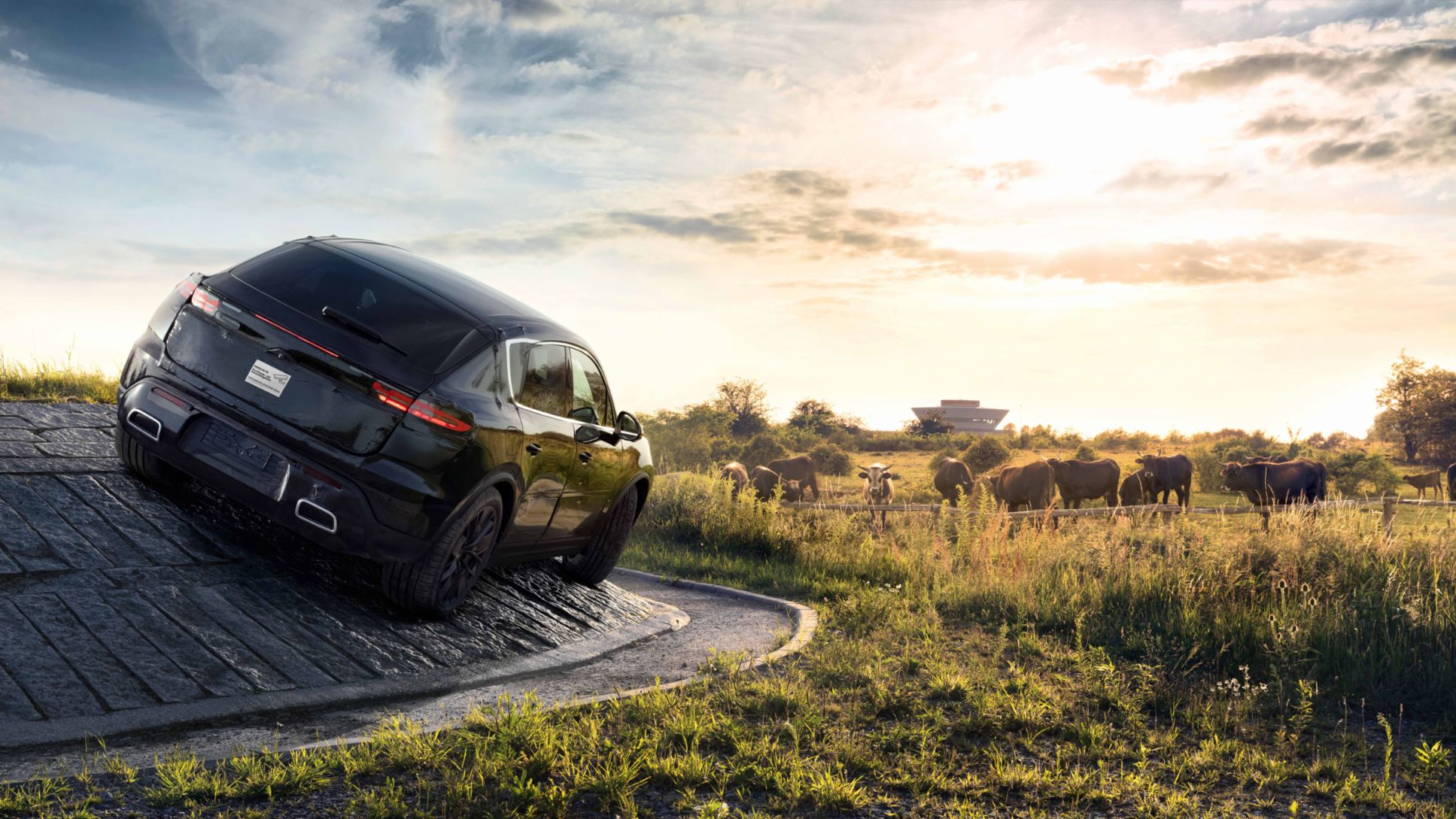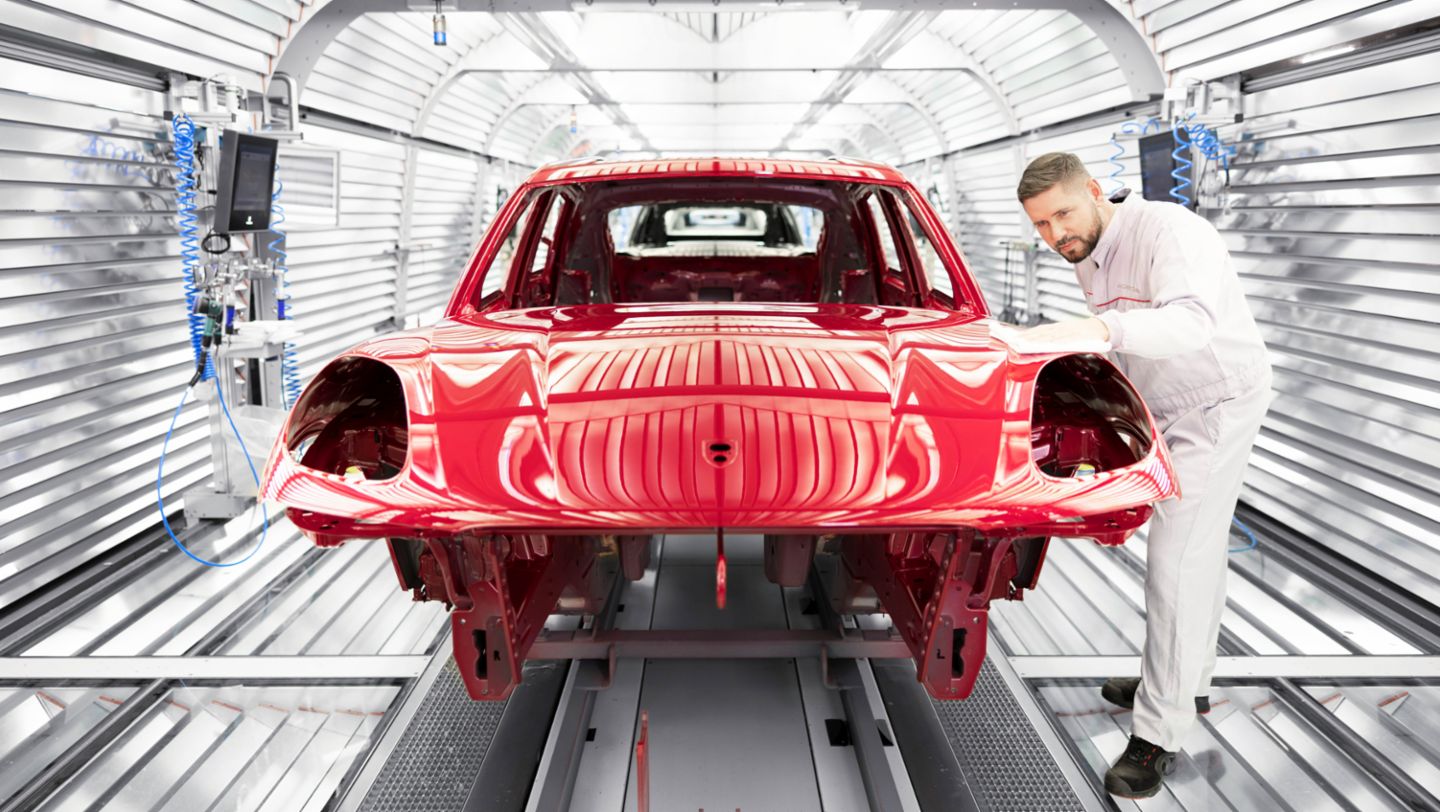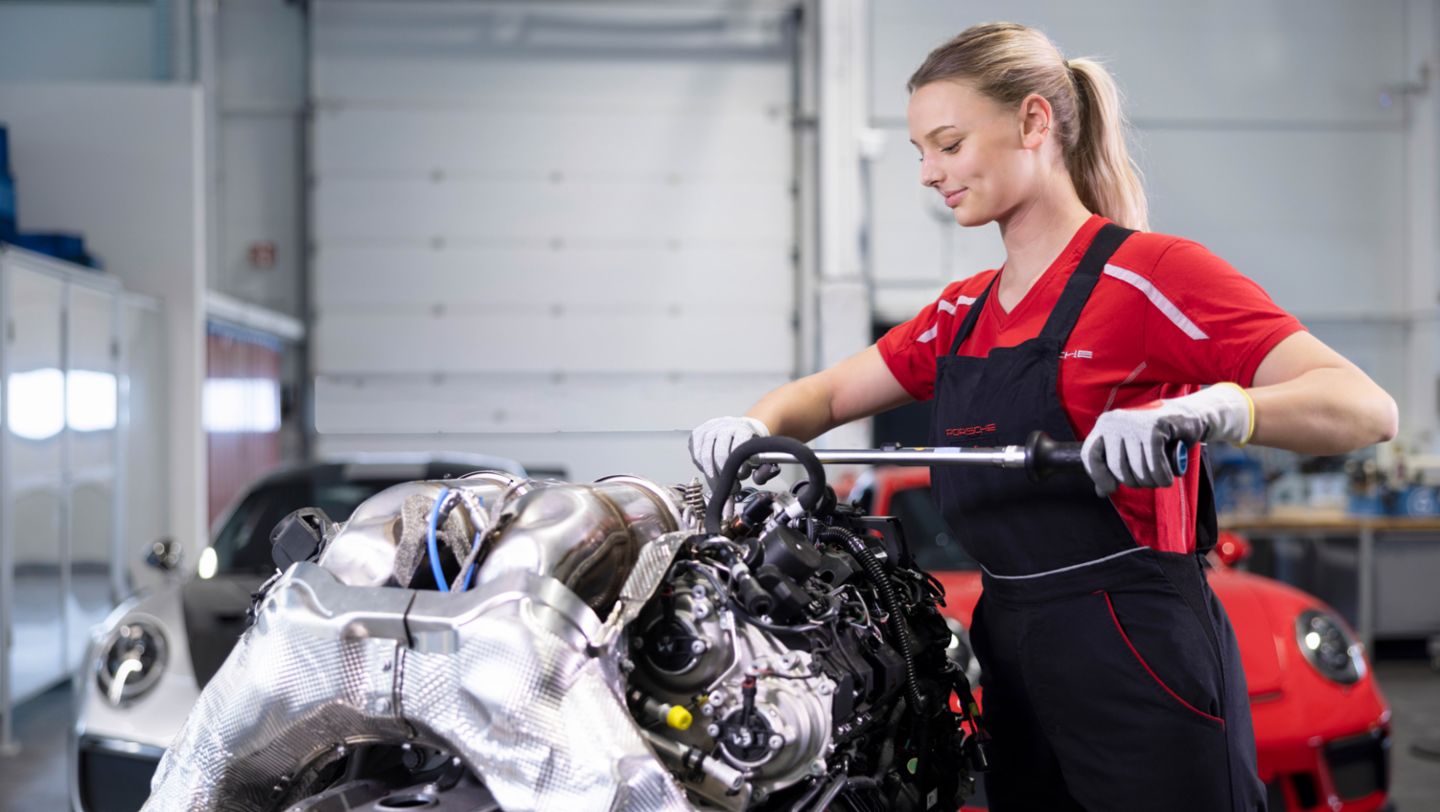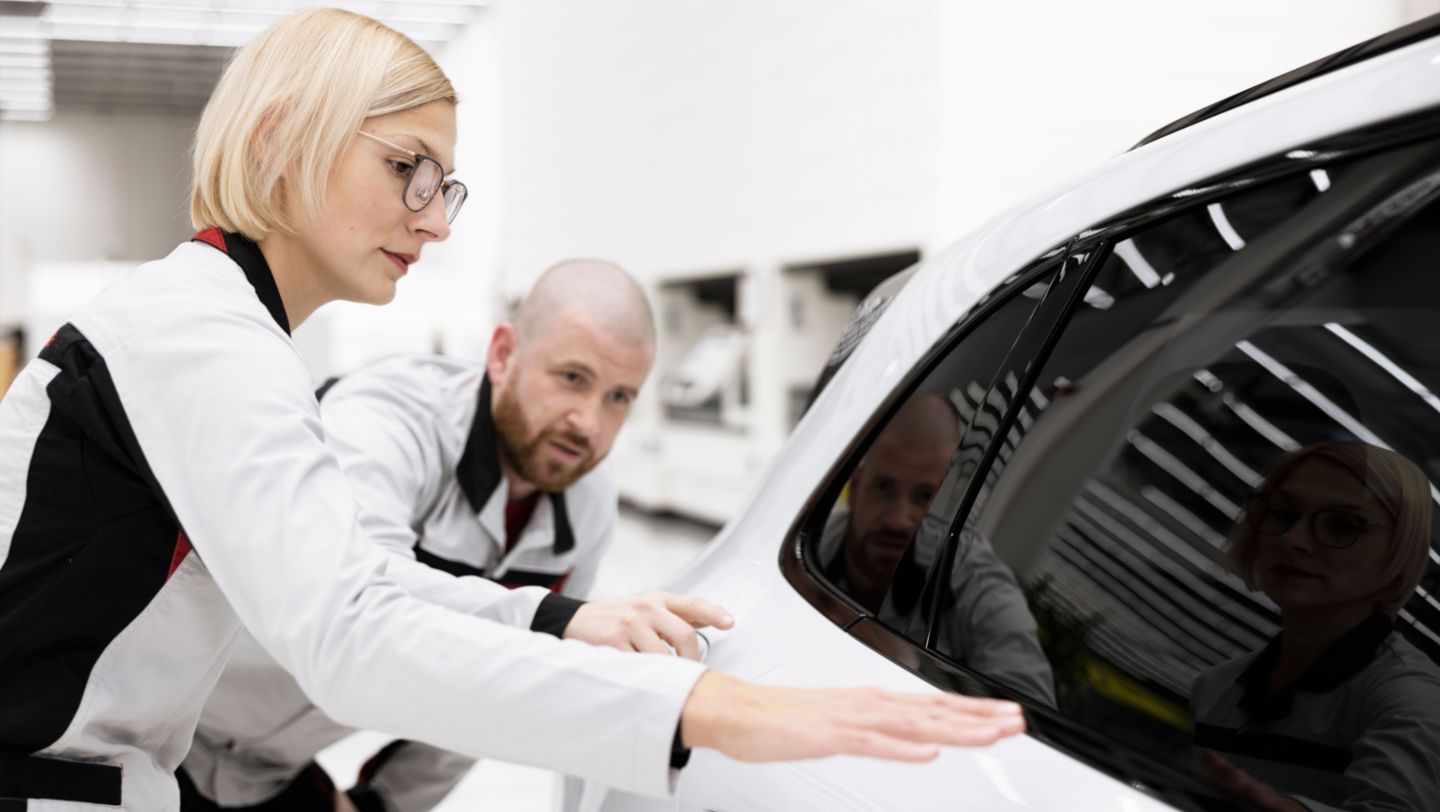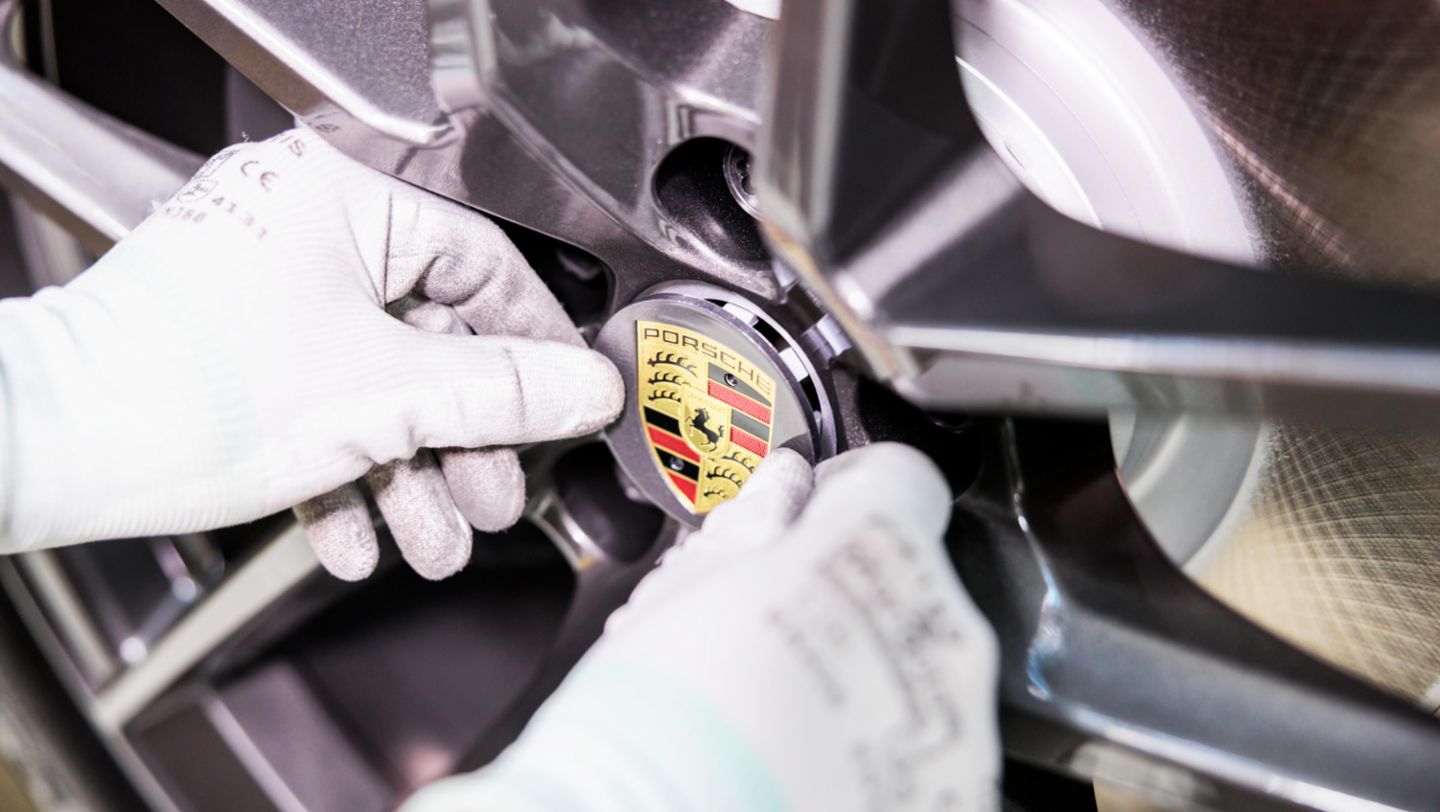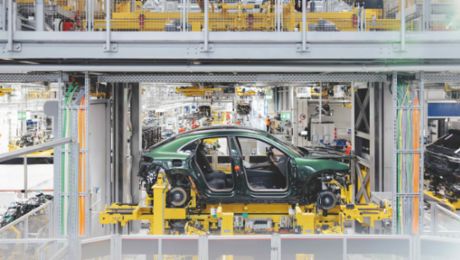Behind a simple wooden fence, a wild ox stands calmly in the pasture surrounded by his herd. Measuring 1.6 meters at the shoulders and weighing in at around 700 kilograms, this ox with powerful horns is a rare sight that visitors can enjoy close-up in northwestern Leipzig. Grazing on the grasses and herbs, the imposing animal also enjoys an extraordinary view from the pasture, as a black SUV approaches almost silently along an off-road stretch beyond the fence. The camouflaged SUV without a license plate features a sticker on the rear: “Research and Development Vehicle.”
End of 2023 Start of production E-Macan
This harmonious interaction is no coincidence, as the premises of the Porsche Plant Leipzig begin just behind the pasture. The test vehicle comes from here, a location that will soon be home to the subsequent series model. Production of the new Macan will kick off in the exhibition city at the end of 2023, with 800-volt technology, 450 kW of performance, and electronic differential lock.
3 drive types at a single plant
An all-electric SUV that will provide the Porsche electric strategy with more momentum. In this field, the company is pursuing one of the most ambitious strategies in the entire industry. According to the sports car manufacturer, more than 80 percent of all vehicles delivered will be all-electric as of 2030.
“We’ve been working with electric mobility here since 2010,” clarifies Sebastian Ganswindt, plant structure planner, referring to when the first Cayenne hybrid model was manufactured. “But the E-Macan will push us even farther!” Ganswindt is well acquainted with the Leipzig site, as he’s been there from the very start. He even played a key role in the plant’s organic growth. “Our objective for the new E-Macan was to optimize costs and processes and integrate the new vehicle into the range. So we mechanized operations, added another 40 meters to the assembly hall, and restructured the testing ground, the “marriage” process, and battery delivery. As a result, Porsche will one day be able to manufacture models with an internal combustion engine, hybrid vehicles, and the all-electric Macan on a single assembly line.
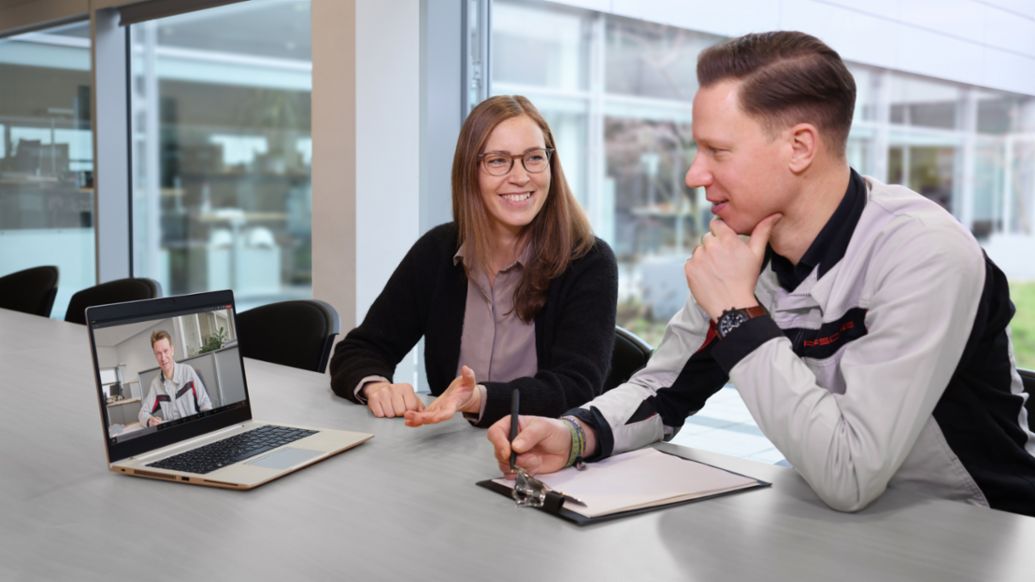
This represents enormous flexibility, but Member of the Executive Board responsible for Production and Logistics Albrecht Reimold is already looking to the future and formulating the company objective for the coming decade: “We’re pursuing the goal of making our entire value chain net carbon neutral by 2030, which also includes a carbon-neutral service life for future BEV models. We’re working on the assumption of a total mileage per vehicle of 200,000 kilometers.” But Reimold plans to go one step further: “Our sustainability objectives go beyond mere decarbonization. Over the long term, we’ll work toward the vision of the Zero Impact Factory.” Consistent improvement across all areas, from resource and material efficiency to biodiversity.
Those, in particular, are key words for Anke Höller, who is fully responsible for environmental and energy management at Porsche AG. “With the vision of the Zero Impact Factory, we’ve set ourselves the climate action goal of minimizing the environmental footprint of vehicle production — a comprehensive concept with positive impacts on economic, environmental, and social aspects,” explains Höller, referring to the eleven areas of action. “The cornerstones have already been established. On our path to becoming a Zero Impact Factory, we’ve turned our focus to Scope 1 and Scope 2 emissions, which refer to the direct and indirect carbon emissions of our production facilities.”
Our sustainability objectives go beyond mere decarbonization. Over the long term, we’ll work toward the vision of the Zero Impact Factory. Albrecht Reimold, Member of the Executive Board responsible for Production and Logistics
Standing on the plant roof with a view of the photovoltaic systems, energy manager Björn Engert describes how Porsche Leipzig has already begun to conserve energy and resources. The production facility is powered entirely with electricity from renewable sources, some of which is produced in-house. Three photovoltaic systems with a capacity of around 4.6 MWp are installed at the site. With construction of the body shop for the new Macan and use of the resulting roof space, this value can be increased to approximately 9.4 MWp. Engert points beyond the hall roof toward the south. A biomass plant installed directly on the plant premises covers approximately half of the space heating required.
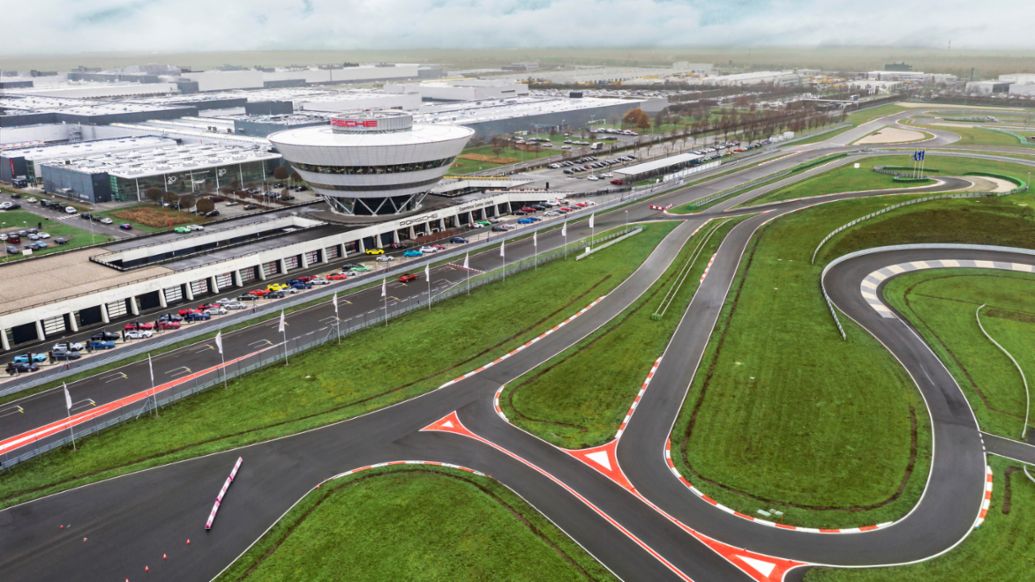
Porsche introduced a resource efficiency program at the site in 2015. The successfully implemented measures include the organic stone dust-based separation process in the paint shop, which reduces energy requirements by up to 60 percent when applying the paint compared to the conventional water-based system. Mixing paints one day, a machine operator realized that pump capacity can be reduced without compromising quality, which saves energy and conserves materials. The idea was implemented right away. Or take for instance the body shop, where a modern system for cooling the robots’ welding tongs uses heat recovery to reduce annual electricity consumption. Waste, energy, solvents, water, and CO₂ are also used more carefully.
“The plant has grown significantly, but energy consumption has only increased marginally,” explains Engert with pride. Porsche Leipzig is “sustainable to the fourth power,” he says with a laugh, listing the achievements: green energy supply since 2017, platinum certificate presented by the German Sustainable Building Council (DGNB) in 2019, the Lean & Green Management Award in 2021, and operations that are net carbon neutral — just like at the Porsche sites in Zuffenhausen and Weissach.
The motivation is where it needs to be
Leipzig Plant Manager Gerd Rupp is not content to rest on his laurels. He knows his workforce in Leipzig, which consists of 4,400 women and men. “All of them are looking forward to starting production of the new Macan,” he says cheerfully. The motivation is where it needs to be.
Employees are at the heart of the transformation, with electrification and digitalization fundamentally changing the prospects of every fourth job at Porsche. Launched in 2021, the “Workforce Transformation” also coordinates training and retraining courses throughout the Porsche Group and is one of the biggest qualification strategies in company history.
“Proactively managed, with a job guarantee for permanent staff up through 2030. We’re taking everyone with us,” says Andreas Haffner, Member of the Executive Board responsible for Human Resources, who also relies on the typical Porsche team spirit. “90 percent of our people say that Porsche is an attractive employer. More than 80 percent are satisfied — a value we’re proud of. We’re a family that strives for extraordinary achievements and looks after each other.”
Apparently an especially hospitable family, as demonstrated by the area beyond the plant fence, the workplace of Beke Dubbels, who is in charge of nature protection and environmental issues at the plant. A space that served as a military training zone for a hundred years is now home to grazing oxen and English Exmoor ponies, pheasants, black kites, amphibians, brown hares, roe deer, bats, and 50 bee colonies. The largely untouched land measures 132 hectares. “Nature is our role model,” says Dubbels. “There’s strength in diversity. A functioning ecosystem that offers space for everyone.”
Eleven areas of action towards the vision of the zero impact factory
| 1 | Environmental compliance |
| 2 | Architecture and perception |
| 3 | Planning |
| 4 | Digitalization |
| 5 | Water |
| 6 | Energy und CO2 |
| 7 | Material |
| 8 | Soil |
| 9 | Biodiversity |
| 10 | Pollutants |
| 11 | Mobility |
Info
Text first published in the Annual & Sustainability Report 2022.
